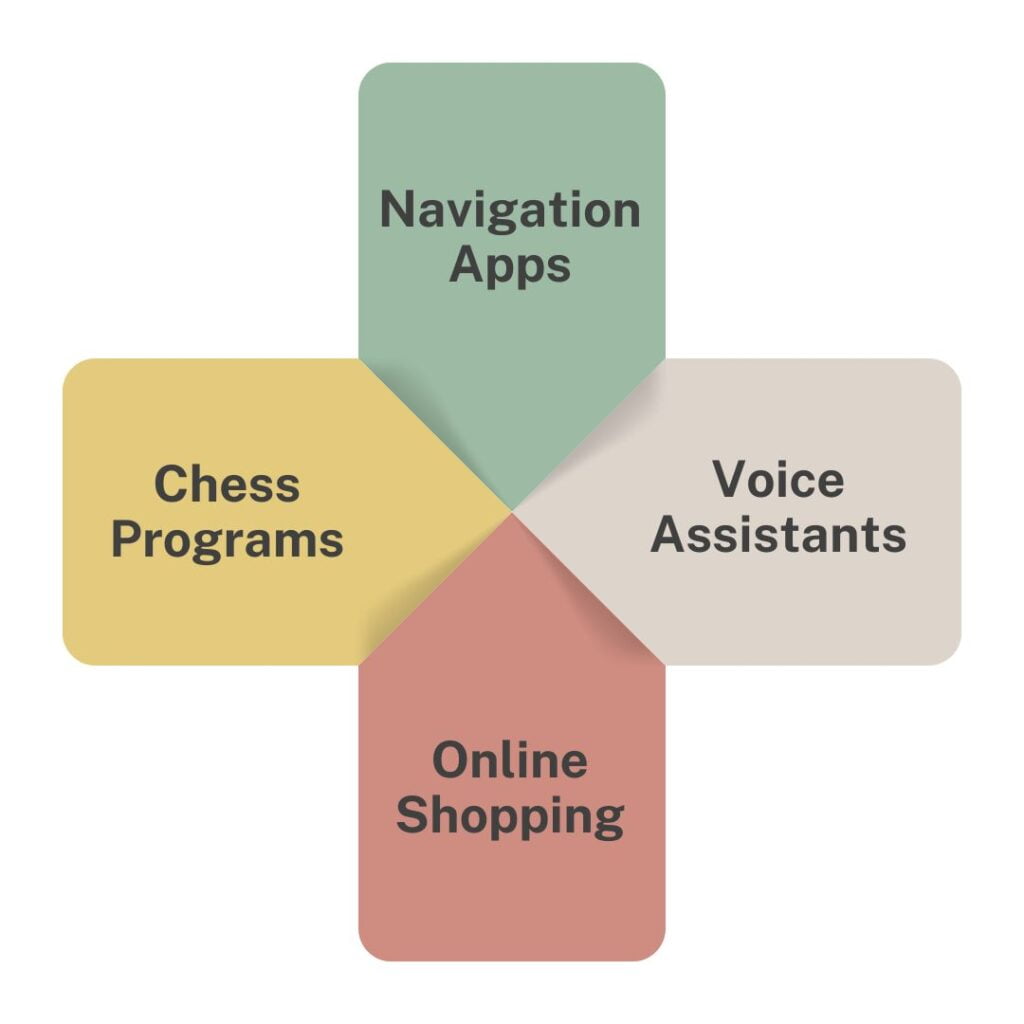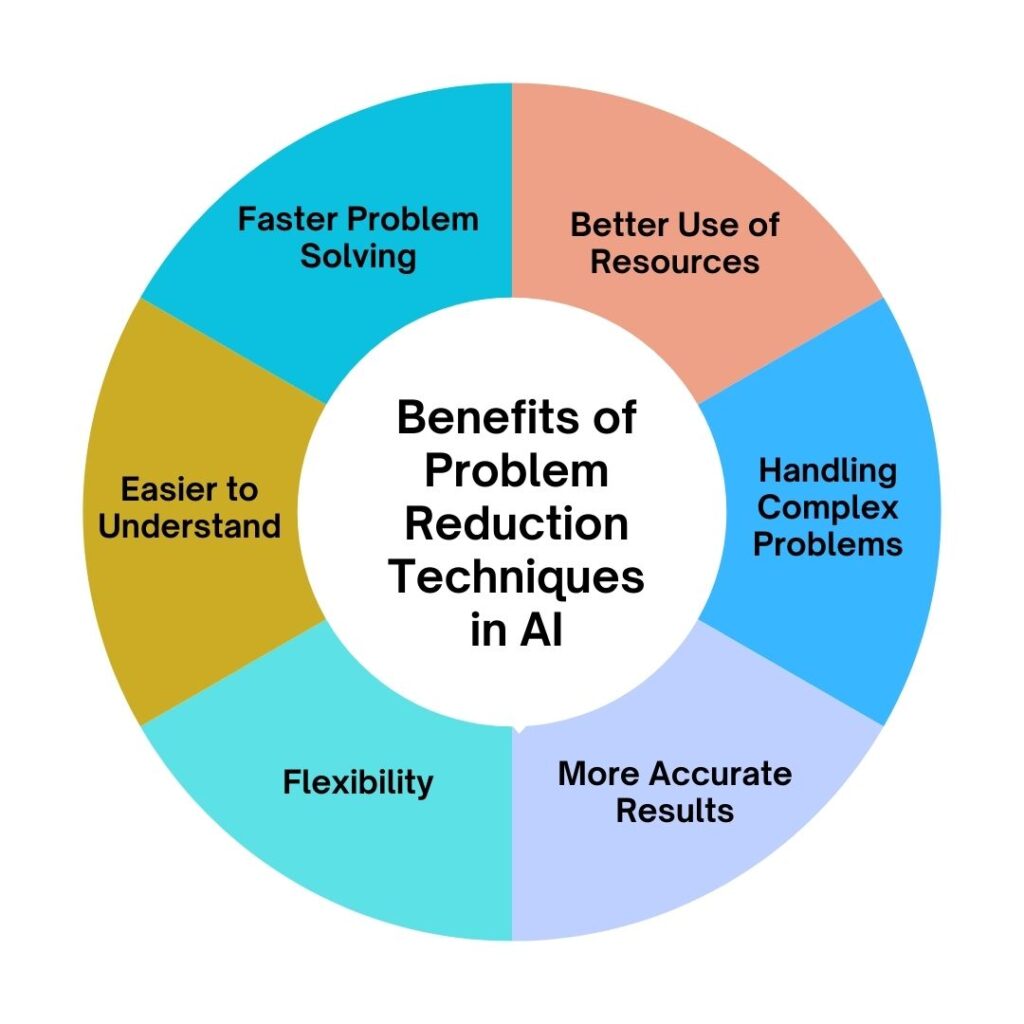Welcome to our beginner’s guide on Problem Reduction Techniques in AI. In this post, we’ll explore how these methods help solve complex AI problems more efficiently.
Problem Reduction Techniques in AI are ways to break down big, complicated problems into smaller, more manageable parts. They help AI systems tackle tough challenges step by step.
In this blog, we’ll look at different types of problem reduction techniques in AI, see how they work in real life, and learn why they’re so important for AI. We’ll keep things simple and easy to understand, perfect for those just starting out in AI.
Understanding Problem Reduction Techniques in AI

Problem Reduction Techniques in AI are clever ways to make big problems smaller and easier to solve.
Think of them like breaking a giant puzzle into smaller pieces. Instead of trying to solve one huge problem, AI uses these techniques to split it into bite-sized chunks.
These methods help AI systems tackle complex tasks without getting overwhelmed.
They work by simplifying problems, cutting out unnecessary information, or turning tricky issues into more familiar ones.
By using Problem Reduction Techniques, AI can work faster and smarter. It’s like having a toolbox full of different problem-solving tricks.
This approach helps AI handle all sorts of challenges, from playing chess to planning routes or understanding human language.
Common Problem Reduction Techniques in AI

Let’s look at some common Problem Reduction Techniques used in AI. These are different tools that help AI break down big problems into smaller ones.
Divide and Conquer
This is like cutting a big cake into slices. AI splits a big problem into smaller parts, solves each part, and then puts the answers back together.
Abstraction
Imagine looking at a map instead of the real world. Abstraction removes unnecessary details, focusing only on what’s important to solve the problem.
State Space Reduction
This is like finding shortcuts in a maze. It helps AI ignore paths that won’t lead to a solution, saving time and effort.
Problem Transformation
Sometimes, it’s easier to change the problem into one we already know how to solve. It’s like turning a word problem into a math equation.
These techniques help AI tackle complex problems more easily. They’re like different ways to simplify puzzles, making them easier for AI to solve.
Real-world Applications

Let’s look at how Problem Reduction Techniques in AI are used in the real world. These methods help solve everyday problems in clever ways.
Example 1: Navigation Apps
When you use a map app on your phone, it uses problem reduction. Instead of checking every possible route, it breaks the journey into smaller parts and finds the best path for each section.
Example 2: Voice Assistants
When you talk to Siri or Alexa, they break down your words into smaller parts. This helps them understand what you’re saying and find the right answer more quickly.
Example 3: Online Shopping
Ever wonder how websites suggest products you might like? They use problem reduction to break down your shopping history into patterns, making it easier to predict what you’ll want next.
Example 4: Chess Programs
AI that plays chess doesn’t look at every possible move. It breaks the game into smaller situations, focusing on the most promising moves to save time and make smarter choices.
These examples show how AI uses problem reduction to make our lives easier every day. By breaking big problems into smaller ones, AI can work faster and smarter in all sorts of situations.
Benefits of Problem Reduction Techniques in AI

Problem Reduction Techniques in AI come with lots of benefits. Let’s look at why they’re so helpful:
1. Faster Problem Solving
By breaking big problems into smaller ones, AI can work much quicker. It’s like solving many small puzzles instead of one huge one.
2. Better Use of Resources
These techniques help AI use computer power more wisely. It doesn’t waste time on parts of the problem that aren’t important.
3. Handling Complex Problems
Some problems are too big to solve all at once. Problem reduction lets AI tackle issues that would otherwise be too difficult.
4. More Accurate Results
By focusing on smaller parts, AI can be more precise. It’s easier to get things right when you’re dealing with simpler tasks.
5. Flexibility
These methods can be used for all sorts of problems. This makes AI more versatile and able to handle different challenges.
6. Easier to Understand
When a problem is broken down, it’s often easier for humans to see how the AI is working. This helps us trust and improve AI systems.
These benefits show why Problem Reduction Techniques are so important in AI. They make AI smarter, faster, and more useful in our daily lives.
Challenges in Applying Problem Reduction in AI
Problem Reduction Techniques in AI are powerful, but they come with their own set of challenges.
Choosing the right method isn’t always straightforward, and sometimes important details can get lost in the simplification process.
Combining solutions from smaller problems into one big answer can be tricky. There’s also a risk of making simple problems more complex by breaking them down too much.
Balancing speed and accuracy is another ongoing challenge.
AI systems need to be flexible, adapting their approach to different situations. What works for one problem might not work for another.
Understanding these challenges helps us use Problem Reduction Techniques more effectively, improving AI’s ability to solve complex problems in the real world.
Conclusion
In conclusion, Problem Reduction Techniques in AI are powerful tools that help tackle complex challenges. By breaking big problems into smaller, manageable parts, AI can work more efficiently and accurately. While these methods come with their own challenges, they’re crucial for advancing AI capabilities. As we continue to refine these techniques, we’ll see AI solving even more complex problems, making our lives easier, and opening up new possibilities in technology.


1 thought on “Problem Reduction Techniques in AI: A Beginner’s Guide”